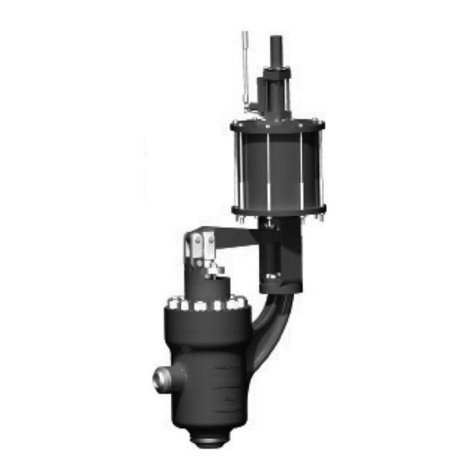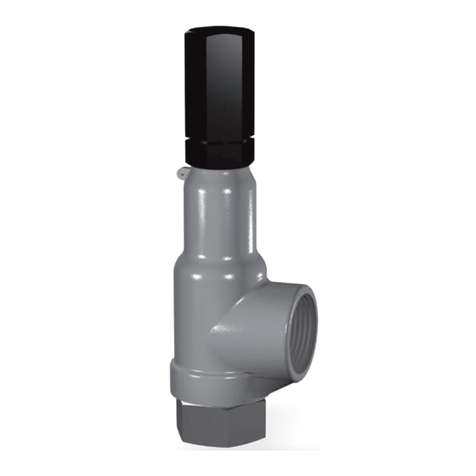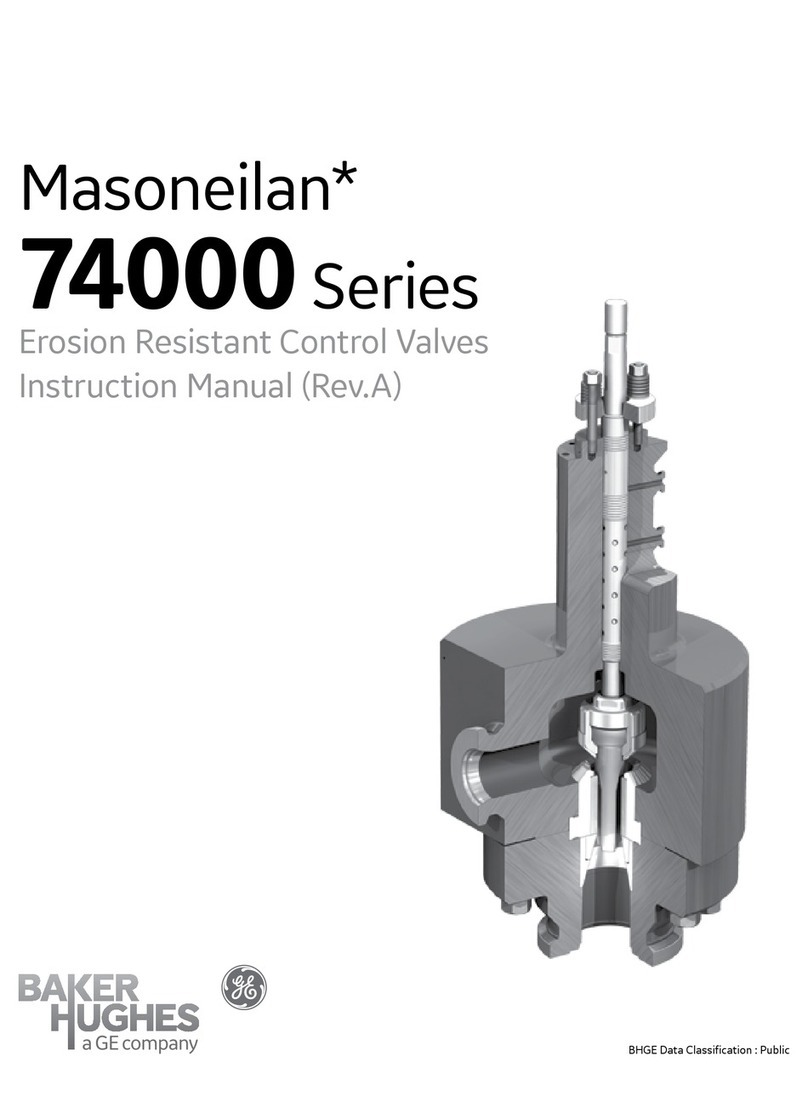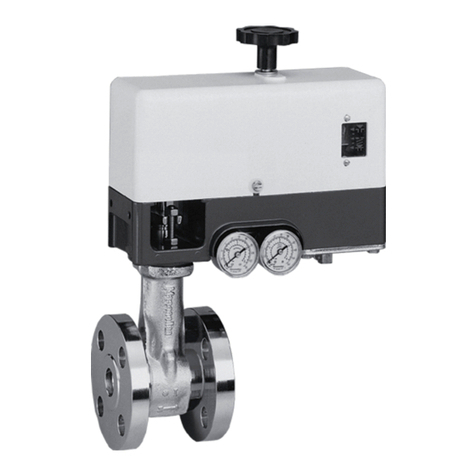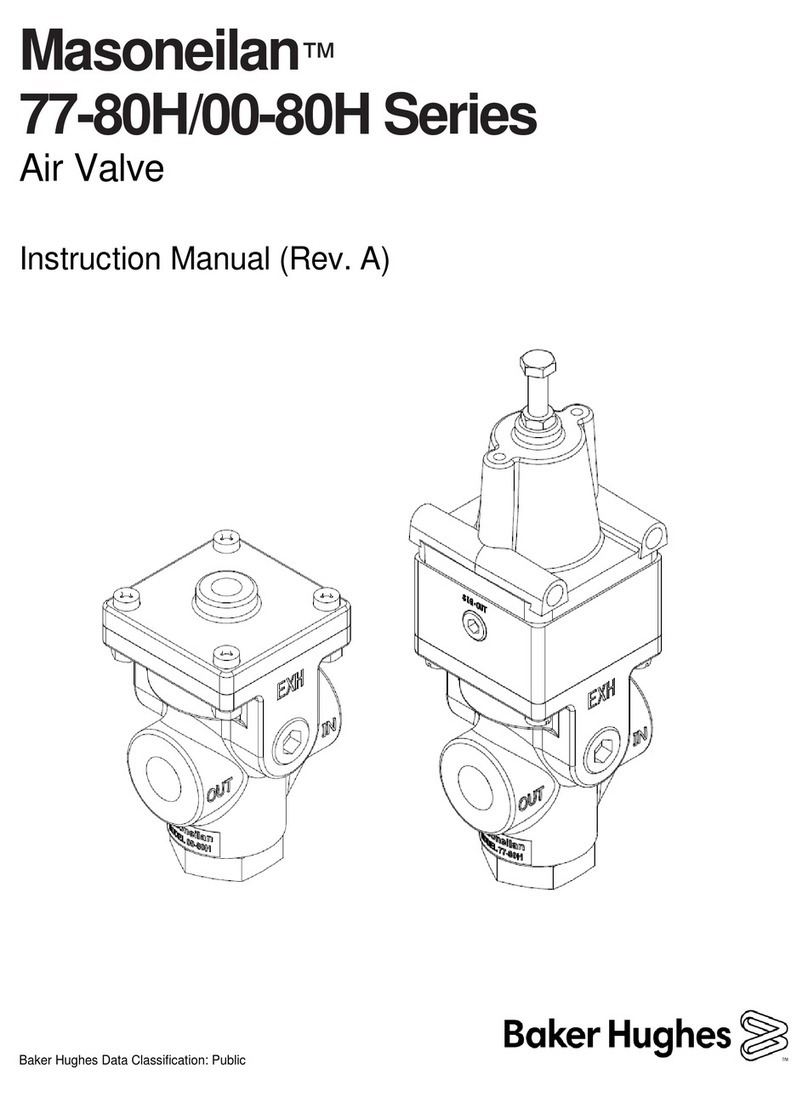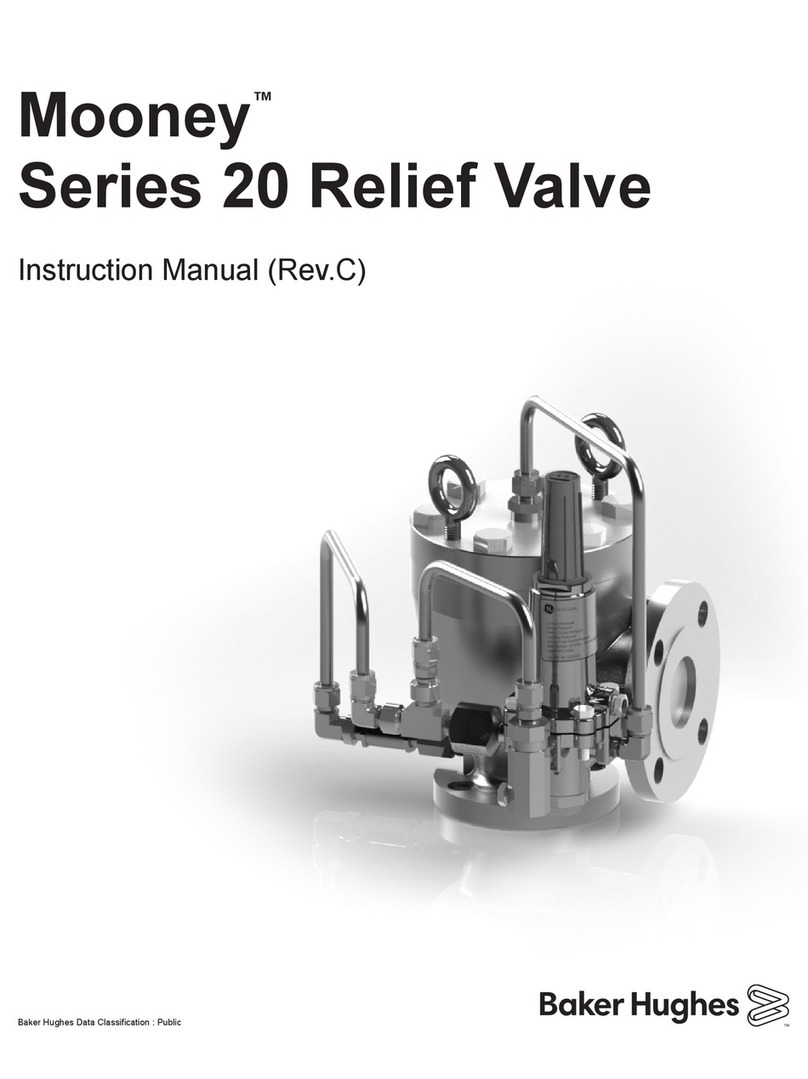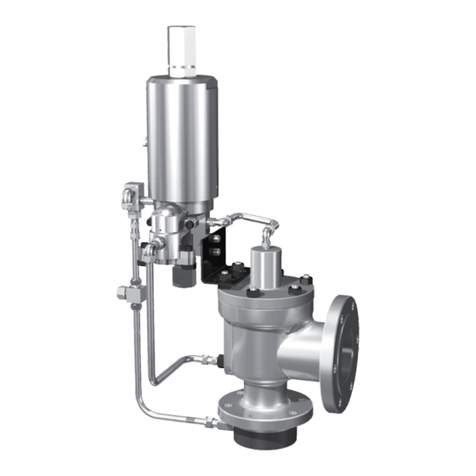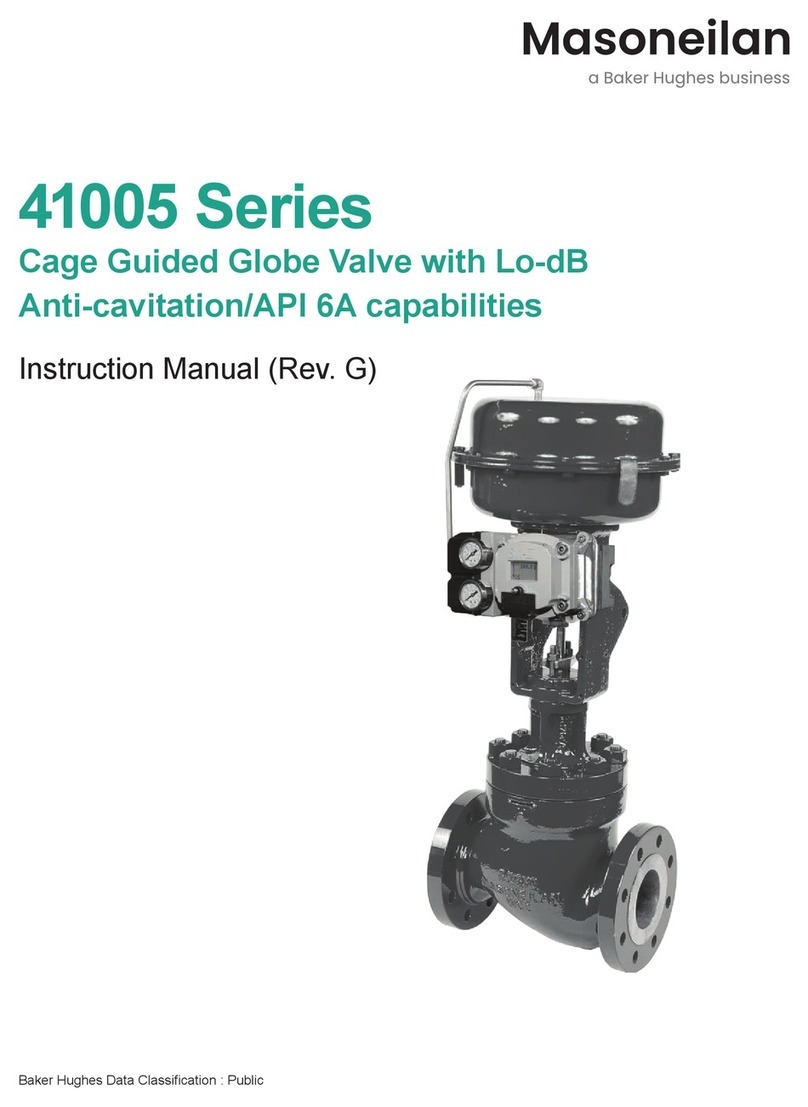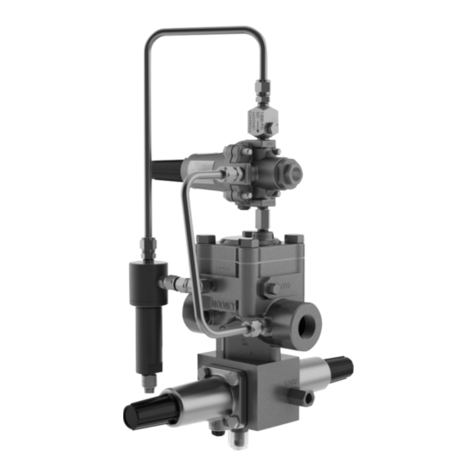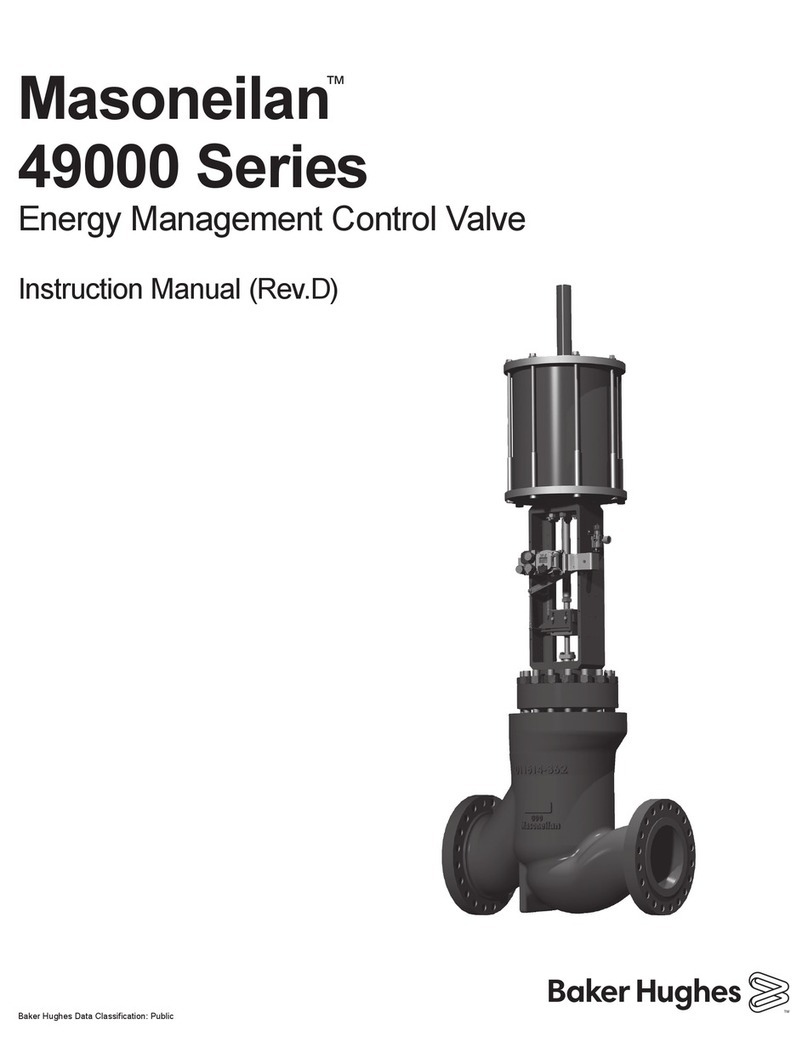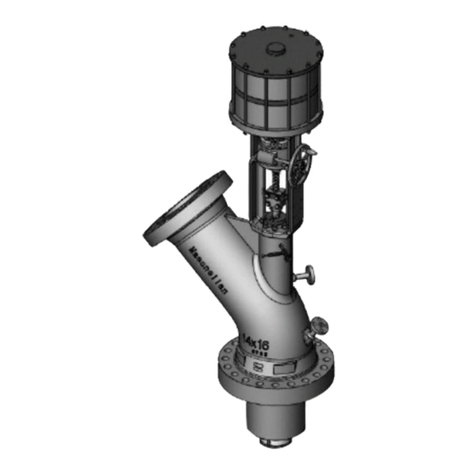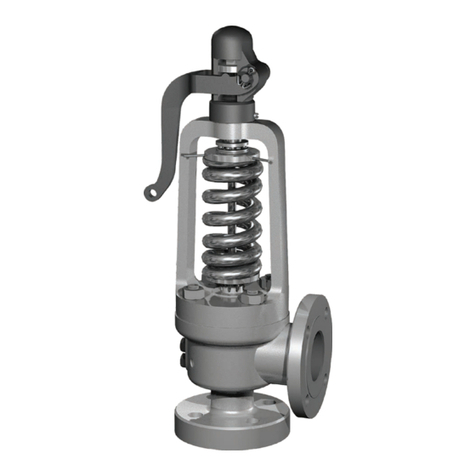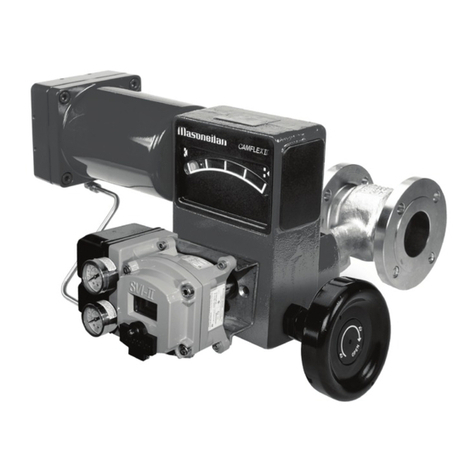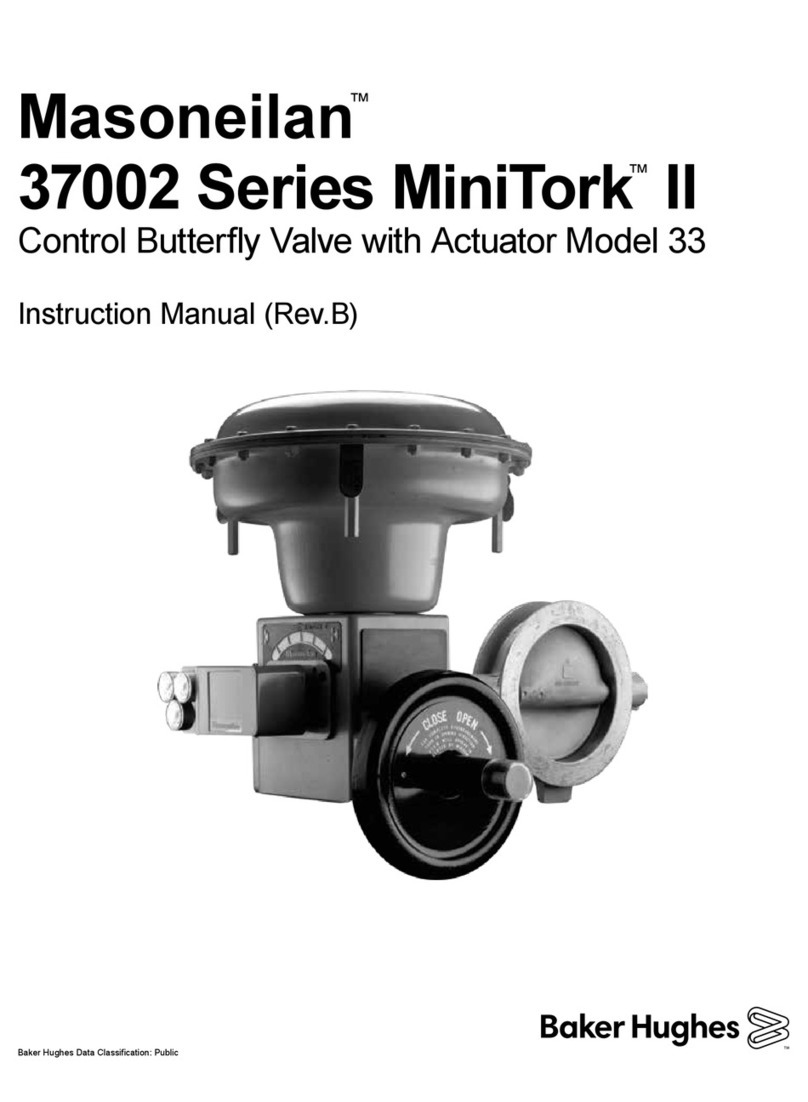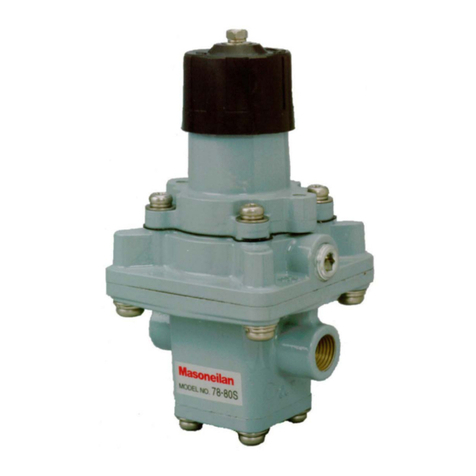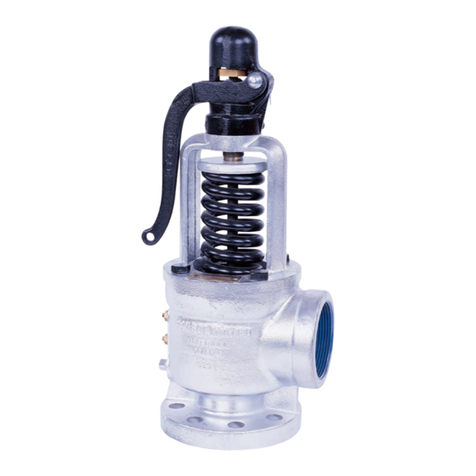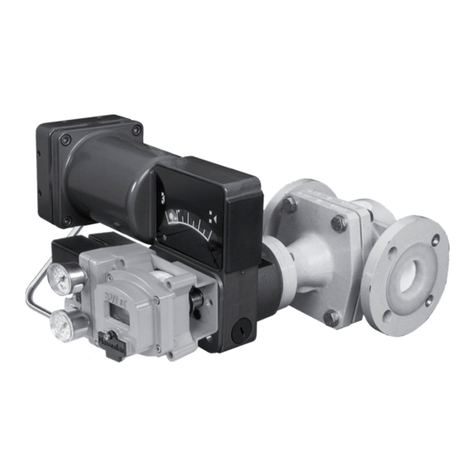
3 | Baker Hughes Copyright 2023 Baker Hughes Company. All rights reserved.
Unpacking
Care must be exercised when unpacking the valve to prevent
damage to the accessories and component parts. Contact the local
Baker Hughes Sales Office or Service Center with any issues or
problems. Be sure to note the Masoneilan valve model number and
serial number in all correspondences.
Installation
The 78400/18400 Series valve must always be installed
with the ow tending to open the valve plug. For appli-
cations where insulation of the valve body is required,
do not insulate the valve bonnet.
Recommended Installation
It is recommended to install the 78400/18400 Series valves in the
vertical position with the actuator extended up whenever possible.
This orientation eliminates the need for additional pipe support,
reduces the side load friction on the actuator, and provides ease of
removal of the trim during maintenance for weld-end construction
designs.
Piping Cleanliness
Before installing the valve in the line, clean piping and valve of all
foreign material such as welding chips, scale, oil, grease or dirt.
Gasket mating surfaces must be thoroughly cleaned to ensure
leak-free joints. Sacrificial start-up fixtures can be purchased from
Baker Hughes to protect the operational trim during the installation
and line flushing phases.
If major system or piping modications (or repairs) are
performed, thorough ushing and blowdown of the sys-
tem will be required prior to reinstalling the LincolnLog
trim. Sacricial ushing trim should be installed in the
valve to protect the integrity of the ow passages. Failure
to follow this warning will violate the valve warranty
agreement and could result in control instability, exces-
sive noise levels, and valve leakage.
Isolation Bypass Valve
To allow for in-line inspection, maintenance and removal of the
valve without service interruption, provide a manually operated
shutoff valve on each side of the control valve and a manually
operated throttling valve in the bypass line.
Heat Insulation
In case of a heat-insulated installation, do not insulate the valve
bonnet and take protective measures relative to personal safety.
Hydrostatic Testing and Line Cleaning
During this operation, the control valve must not be used as an
isolating valve. This means that the valve must always be opened
before carrying out pressure tests in the process line, cleaning
of pipes, etc. Otherwise equipment damage or failure of the seal
rings could result. If the value is to remain installed during line
cleaning, flushing trim MUST be installed to prevent damage to
trim components..
Flow Direction
The valve must be installed so that the process fluid will flow through
the valve in the direction indicated by the flow arrow located on the
body.
Welded Connections
Carefully review the information in this section prior to
welding any valves inline. Refer any additional ques-
tions to the local Baker Hughes Sales Oce or Service
Center.
Pre-Weld Preparation
Carefully follow the installation steps defined in the sections noted
above prior to performing weld procedures.
Welding Process
Perform welding process in accordance with the standard
requirements for the materials and weld construction of the specific
valve. Apply post weld heat treatment if required.
Internal valve components should be removed prior
to performing welding or pre/post weld heat treatment
in order to prevent damaging any soft goods (such
as PTFE seals). If unable to remove the elastomeric
components, then other methods must be employed
to prevent the local temperature around the seals from
exceeding the maximum material limits (typically 450°F /
232°C for PTFE-based materials).
Post Weld Cleaning & Assembly
Inspect the body, bonnet, and trim components for cleanliness and
surface condition. Remove any foreign materials, such as weld
chips, slag or scale. Make sure there are no nicks, scratches, burrs
or sharp corners on sealing and sliding surfaces. Clean all gasket
interface surfaces and reassemble using new gaskets to ensure
sealing integrity.
Actuator Assembly
Assemble the actuator onto the control valve using the appropriate
instructions for the specific actuator model and type. Connect air
pressure lines to the actuator ports to meet intended operating
mode (i.e., air-to-extend, air-to-retract, or double-acting).

